Chassis 138031, Body 24
As most enthusiasts will tell you, the Healey 100 was first displayed at the 1952 Earls Court Motor Show in England, and that a deal was struck with Len Lord from Austin to build the car as the Austin Healey 100. Part of this arrangement was that The Donald Healey Motor Company would build a number of cars at it's Warwick works before before Austin took over the task of volume production. Chassis 138031, body number 24 is the first production Austin Healey 100 to be produced at Austin's Longbridge works. This Significant Vehicle in the Ancestry of the of Austin Healey vehicle range is now owned by Blair Harber from Canada, and is undergoing sympathetic restoration, with due care to the vehicles original specifications. The following web pages will document the restoration from start to finnish and Culminated ( hopefully ) with the vehicle being presented for display at the Open Road 2002 meet at Lake Tahoe in the U.S.A.

The identification plates pictured above, confirming the identity of #24, note the "1" on edge forming the dash on the batch, body number plate at top right common on many early plates. While the car has been reported as having been completed on May 20th 1953, John Wheatley's research indicates that June 20th is the correct date.

The car "as found" in surprisingly good condition
for it's age. While there is rust to be found in the usual places, the
car has lasted better than many others.

The car was purchased from Bill Wood (at left of picture) of Egremont Mass. in October 1999. Rich Chrysler (at right of picture) assisted with the inspection and purchase. Bill had purchased the car from an individual in San Francisco who had advertised it in the Hemmings Motor News in the early 1980ís. The ad also made mention of the fact that it was the first production Austin Healey.

The car was complete with it's original engine, note the grey/blue paint colour.

The chassis frame and bulkheads, note the fabricated front bulkhead top panel.

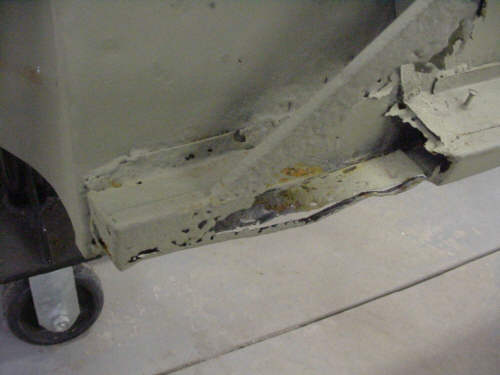
The rear section of the outer sill showing the usual rust, but once again the extent far less than usual.
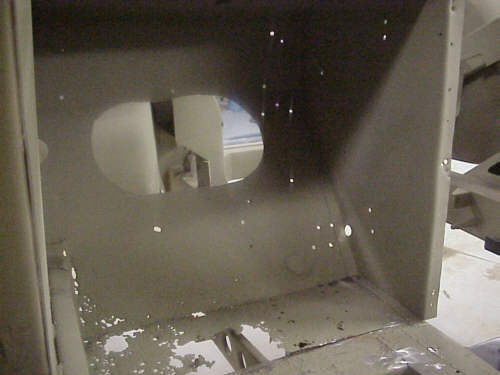
Note the large pedal cut out, unlike later cars, and the absence of raised seams on the chassis rails.
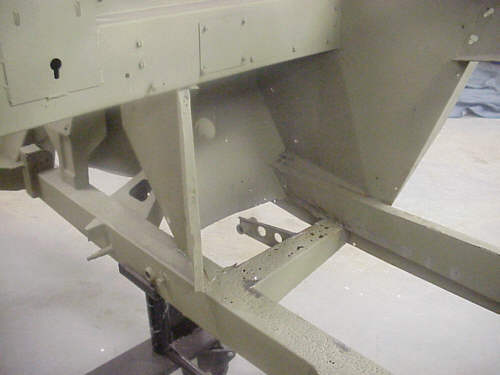
The rusted areas cut away ready for repair, note that the right hand vertical foot well panel has a folded line where it sweeps in to the inner sill, rather than the sweeping curve found on later production cars.
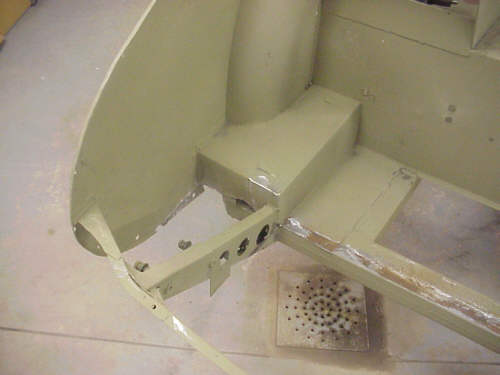
Note: smooth vertical panel on the rear scuttle, only found on early cars.
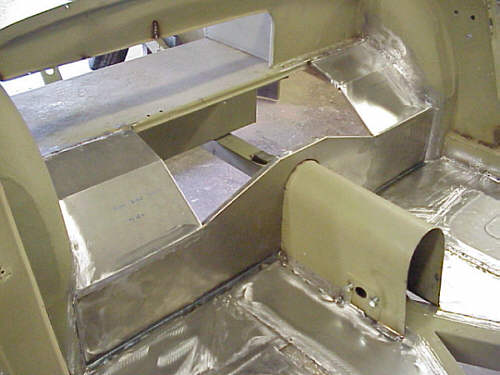
Note: smooth vertical panel, and spare wheel area, and flat floor above front, rear spring hanger. As these panels are not available commercially they have been reproduced specifically for this car. These images taken at QRS (Quality Restoration Services) where the new repair sections were installed and the chassis assembly painted in blue tinted primer.
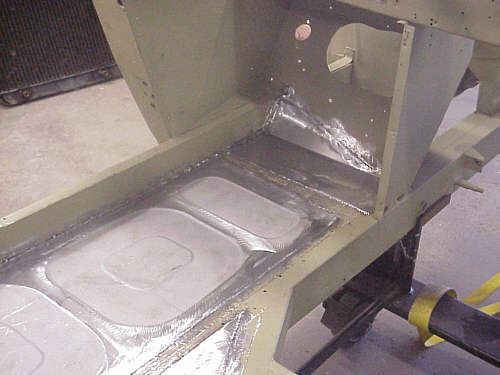
New floor panels in place and repairs completed to the foot well.
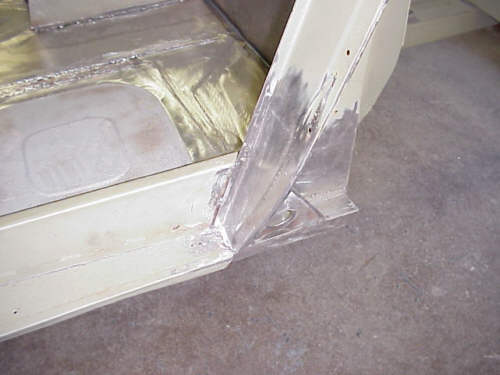
Repairs completed to the left hand door shut pillar and outer sill.
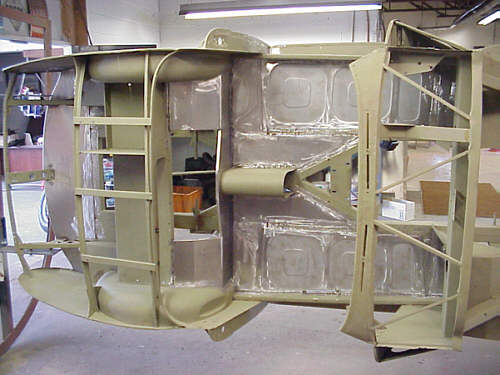
The frame shown above, rust repairs completed, note smooth trunk floor, extra (central) brace on rear bulkhead and cross brace. For the un initiated note that the floor pressings produce the number 100, though up side down in this image.
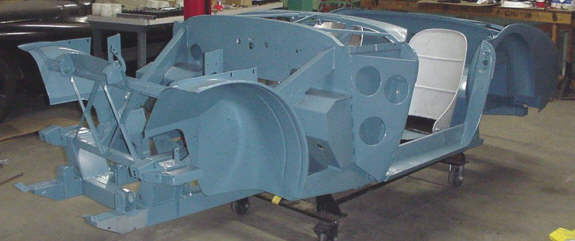
Rust repairs completed, the frame is shown above in tinted primer. The front fender inner guard is quite different on this early car, and it is made from a single sheet of metal that is cut, formed, ribbed, flanged, and welded to make the entire inner guard. It has a straight outer flange on it, and there are no buffers between it and the outer fender. Also note the unusual shock mounts, to suit the early Girling Shock Absorbers.
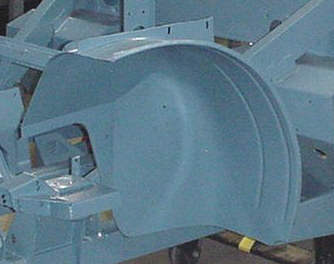
Page 2